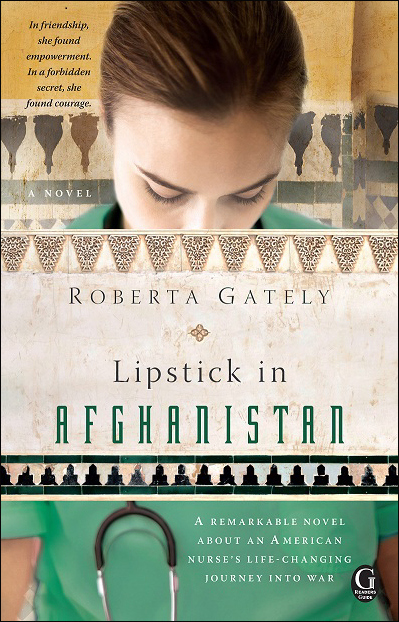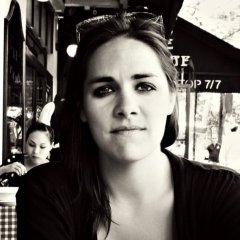New York Write to Pitch 2023 and 2024
 For New York Write to Pitch or Algonkian attendees or alums posting assignments related to their novel or nonfiction. Assignments include conflict levels, antagonist and protagonist sketches, plot lines, setting, and story premise. Publishers use this forum to obtain information before and after the conference event, therefore, writers should edit as necessary. Included are NY conference reviews, narrative critique sub-forums, and most importantly, the pre-event Novel Development Sitemap.
For New York Write to Pitch or Algonkian attendees or alums posting assignments related to their novel or nonfiction. Assignments include conflict levels, antagonist and protagonist sketches, plot lines, setting, and story premise. Publishers use this forum to obtain information before and after the conference event, therefore, writers should edit as necessary. Included are NY conference reviews, narrative critique sub-forums, and most importantly, the pre-event Novel Development Sitemap.
Subforums
-
- 449
- posts
-

- 10
- posts
-
- 32
- posts
19 topics in this forum
-
- 0 replies
- 4.7k views
The novel writing, development, editing, and pitch forums are for utilization by New York Write to Pitch and all other Algonkian alums, as well as AAC members and guests. This is the primary focal point for polishing, rewriting, or beginning a new genre or literary plot-driven manuscript. Novel Development Forums, Programs, and Events Novel Writing and Editing - Concept to Query Platitudes, entitled amateurism, popular delusions, and erroneous information are all conspicuously absent from this collection of detailed novel writing guides and maxims. The goal is to provide you, the aspiring novel author, with the skills and knowledge it takes to realistica…
 Last reply by Admin_99,
Last reply by Admin_99, -
- 2 followers
- 97 replies
- 19.5k views
Introduction to Pre-event Assignments The below seven assignments are vital to reaching an understanding of specific and critical core elements that go into the creation of a commercially viable genre novel or narrative non-fiction. Of course, there is more to it than this, as you will see, but here we have a good primer that assures we're literally all on the same page before the event begins. You may return here as many times as you need to edit your topic post (login and click "edit"). Pay special attention to antagonists, setting, conflict and core wound hooks. And btw, quiet novels do not sell. Keep that in mind. Be aggressive with your work. Mi…
 Last reply by Jennifer Snyder,
Last reply by Jennifer Snyder, -
Introduction to Pre-event Assignments The below seven assignments are vital to reaching an understanding of specific and critical core elements that go into the creation of a commercially viable genre novel or narrative non-fiction. Of course, there is more to it than this, as you will see, but here we have a good primer that assures we're literally all on the same page before the event begins. You may return here as many times as you need to edit your topic post (login and click "edit"). Pay special attention to antagonists, setting, conflict and core wound hooks. And btw, quiet novels do not sell. Keep that in mind. Be aggressive with your work. Mi…
Last reply by Marilee Dahlman, -
- 1 follower
- 68 replies
- 10.6k views
Introduction to Pre-event Assignments The below seven assignments are vital to reaching an understanding of specific and critical core elements that go into the creation of a commercially viable genre novel or narrative non-fiction. Of course, there is more to it than this, as you will see, but here we have a good primer that assures we're literally all on the same page before the event begins. You may return here as many times as you need to edit your topic post (login and click "edit"). Pay special attention to antagonists, setting, conflict and core wound hooks. And btw, quiet novels do not sell. Keep that in mind. Be aggressive with your work. Mi…
Last reply by Samala, -
- 2 followers
- 61 replies
- 12.1k views
Introduction to Pre-event Assignments The below seven assignments are vital to reaching an understanding of specific and critical core elements that go into the creation of a commercially viable genre novel or narrative non-fiction. Of course, there is more to it than this, as you will see, but here we have a good primer that assures we're literally all on the same page before the event begins. You may return here as many times as you need to edit your topic post (login and click "edit"). Pay special attention to antagonists, setting, conflict and core wound hooks. And btw, quiet novels do not sell. Keep that in mind. Be aggressive with your work. Mi…
Last reply by Roberta Hershenson, -
- 47 replies
- 6.1k views
Introduction to Pre-event Assignments The below seven assignments are vital to reaching an understanding of specific and critical core elements that go into the creation of a commercially viable genre novel or narrative non-fiction. Of course, there is more to it than this, as you will see, but here we have a good primer that assures we're literally all on the same page before the event begins. You may return here as many times as you need to edit your topic post (login and click "edit"). Pay special attention to antagonists, setting, conflict and core wound hooks. And btw, quiet novels do not sell. Keep that in mind. Be aggressive with your work. Mi…
Last reply by Osahon Okundaye, -
- 43 replies
- 4.4k views
Introduction to Pre-event Assignments The below seven assignments are vital to reaching an understanding of specific and critical core elements that go into the creation of a commercially viable genre novel or narrative non-fiction. Of course, there is more to it than this, as you will see, but here we have a good primer that assures we're literally all on the same page before the event begins. You may return here as many times as you need to edit your topic post (login and click "edit"). Pay special attention to antagonists, setting, conflict and core wound hooks. And btw, quiet novels do not sell. Keep that in mind. Be aggressive with your work. Mi…
 Last reply by Melanie_Richardson,
Last reply by Melanie_Richardson, -
- 2 followers
- 43 replies
- 3k views
Introduction to Pre-event Assignments The below seven assignments are vital to reaching an understanding of specific and critical core elements that go into the creation of a commercially viable genre novel or narrative non-fiction. Of course, there is more to it than this, as you will see, but here we have a good primer that assures we're literally all on the same page before the event begins. You may return here as many times as you need to edit your topic post (login and click "edit"). Pay special attention to antagonists, setting, conflict and core wound hooks. And btw, quiet novels do not sell. Keep that in mind and be aggressive with your work. …
 Last reply by JSBaumeister,
Last reply by JSBaumeister, -
- 41 replies
- 6.9k views
Seven Assignments NYCPitch.docx
Last reply by Abby Cummins, -
- 37 replies
- 5.6k views
Introduction to Pre-event Assignments The below seven assignments are vital to reaching an understanding of specific and critical core elements that go into the creation of a commercially viable genre novel or narrative non-fiction. Of course, there is more to it than this, as you will see, but here we have a good primer that assures we're literally all on the same page before the event begins. You may return here as many times as you need to edit your topic post (login and click "edit"). Pay special attention to antagonists, setting, conflict and core wound hooks. And btw, quiet novels do not sell. Keep that in mind and be aggressive with your work. …
Last reply by Karen Ollier, -
- 7 followers
- 37 replies
- 2.6k views
Introduction to Pre-event Assignments The below seven assignments are vital to reaching an understanding of specific and critical core elements that go into the creation of a commercially viable genre novel or narrative non-fiction. Of course, there is more to it than this, as you will see, but here we have a good primer that assures we're literally all on the same page before the event begins. You may return here as many times as you need to edit your topic post (login and click "edit"). Pay special attention to antagonists, setting, conflict and core wound hooks. And btw, quiet novels do not sell. Keep that in mind and be aggressive with your work. …
 Last reply by Karen McCrary,
Last reply by Karen McCrary, -
- 35 replies
- 7.2k views
Introduction to Pre-event Assignments The below seven assignments are vital to reaching an understanding of specific and critical core elements that go into the creation of a commercially viable genre novel or narrative non-fiction. Of course, there is more to it than this, as you will see, but here we have a good primer that assures we're literally all on the same page before the event begins. You may return here as many times as you need to edit your topic post (login and click "edit"). Pay special attention to antagonists, setting, conflict and core wound hooks. And btw, quiet novels do not sell. Keep that in mind. Be aggressive with your work. Mi…
Last reply by James Charles, -
- 2 followers
- 24 replies
- 2.7k views
Introduction to Pre-event Assignments The below seven assignments are vital to reaching an understanding of specific and critical core elements that go into the creation of a commercially viable genre novel or narrative non-fiction. Of course, there is more to it than this, as you will see, but here we have a good primer that assures we're literally all on the same page before the event begins. You may return here as many times as you need to edit your topic post (login and click "edit"). Pay special attention to antagonists, setting, conflict and core wound hooks. And btw, quiet novels do not sell. Keep that in mind and be aggressive with your work. …
Last reply by R. A. Savary, -
- 4 followers
- 18 replies
- 1.5k views
Introduction to Pre-event Assignments The below seven assignments are vital to reaching an understanding of specific and critical core elements that go into the creation of a commercially viable genre novel or narrative non-fiction. Of course, there is more to it than this, as you will see, but here we have a good primer that assures we're literally all on the same page before the event begins. You may return here as many times as you need to edit your topic post (login and click "edit"). Pay special attention to antagonists, setting, conflict and core wound hooks. And btw, quiet novels do not sell. Keep that in mind and be aggressive with your work. …
 Last reply by Heidi,
Last reply by Heidi, -
- 2 replies
- 779 views
Growing up with blood on his hands as a youth, a federal agent returns to his hometown to face a convergence of past and present enemies while keeping his family and friends alive.
Last reply by Daryl Periman, -
- 2 replies
- 273 views
Last reply by JA Wilders, -
- 1 follower
- 1 reply
- 213 views
Introduction to Pre-event Assignments The below seven assignments are vital to reaching an understanding of specific and critical core elements that go into the creation of a commercially viable genre novel or narrative non-fiction. Of course, there is more to it than this, as you will see, but here we have a good primer that assures we're literally all on the same page before the event begins. You may return here as many times as you need to edit your topic post (login and click "edit"). Pay special attention to antagonists, setting, conflict and core wound hooks. And btw, quiet novels do not sell. Keep that in mind and be aggressive with your work. …
Last reply by S. R. Hatcher, -
- 0 replies
- 383 views
1) Story Statement for 3 Protagonists FREYDUN escapes Iran and must make a documentary without jeopardizing his admission to French university or getting deported to Iran where his former interrogator threatens his life. Syrian rebel SAMI survives war, detention, and a journey to Europe that leaves him lame. Before his French refugee camp is razed, he must find housing in order to qualify for a surgery to restore his mobility. Sudanese pop singer ABDO must hide from Janjaweed militiaman Skinny J, escape brutal detention, and survive a shipwreck. In the French refugee camp, Calais Jungle, he must overcome PTSD in order to sing and to pursue a beautiful American…
 Last reply by Betsy Blakeslee,
Last reply by Betsy Blakeslee, -
- 0 replies
- 2.4k views
THE FOLLOWING COLLECTION OF REVIEWS, CONTRACT NEWS, AND GENERAL COMMENTARY INVOLVES ALGONKIAN WRITER CONFERENCE EVENTS OVER THE PAST SEVERAL YEARS. THESE ARE AN ESTIMATED 20-25% OF THE TOTAL MAILS, INTERNET POSTINGS, AND OTHER COMMUNICATIONS SENT TO US. WE APOLOGIZE TO THOSE WHOSE REPORTS AND OBSERVATIONS HAVE NOT BEEN INCLUDED HERE. PLEASE KNOW WE ARE GRATEFUL FOR YOUR COMMUNICATIONS. Susan Breen's MERRY pitched as THE MAN WHO INVENTED CHRISTMAS meets IT'S A WONDERFUL LIFE, was sold to Jess Verdi at Alcove Press at auction. Represented by agent Paula Munier publication in fall 2025. Agent Katharine Sands of the Sarah Jane Freymann agency h…
 Last reply by EditorAdmin,
Last reply by EditorAdmin,


 A forum for New York pitch event alums to post samples of their scenes and prose narrative for detailed critique according to Algonkian Author Connect guidelines. Emphasis on choice of set, narrative cinema, quality of dialogue, metaphor, static and dynamic imagery, interior monologue, general clarity, tone, suspense devices, and routine line editing issues as well.
A forum for New York pitch event alums to post samples of their scenes and prose narrative for detailed critique according to Algonkian Author Connect guidelines. Emphasis on choice of set, narrative cinema, quality of dialogue, metaphor, static and dynamic imagery, interior monologue, general clarity, tone, suspense devices, and routine line editing issues as well.
 Copies of pre-event studies required of Algonkian attendees regardless of workshop, retreat, or conference. Post-event includes the Algonkian Novel Writing Program for purposes of rewrites and editorial tweaks. Like the rest of our programs, these studies emphasize dramatic act structure, high concept, execution models, setting, and choice of antagonist as core element gateways.
Copies of pre-event studies required of Algonkian attendees regardless of workshop, retreat, or conference. Post-event includes the Algonkian Novel Writing Program for purposes of rewrites and editorial tweaks. Like the rest of our programs, these studies emphasize dramatic act structure, high concept, execution models, setting, and choice of antagonist as core element gateways.
 The commentary and publication success stories noted herein by writers and published authors who have attended the New York Write to Pitch, as well as prior pitch conferences, combine to create a representative sample of total responses. All are the result of various articles, interviews, and comments made in Internet forums, as well as mails sent to us. Many of them are quite nuanced and uniquely focused, and as such, a good tie-breaker read for the event.
The commentary and publication success stories noted herein by writers and published authors who have attended the New York Write to Pitch, as well as prior pitch conferences, combine to create a representative sample of total responses. All are the result of various articles, interviews, and comments made in Internet forums, as well as mails sent to us. Many of them are quite nuanced and uniquely focused, and as such, a good tie-breaker read for the event.








